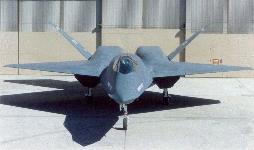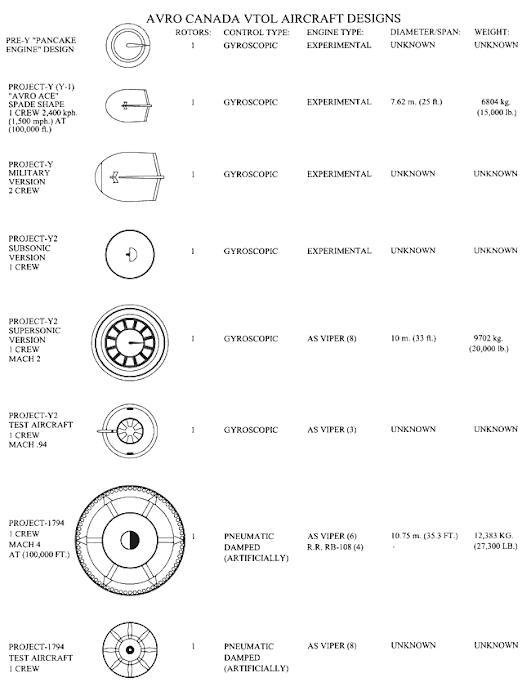"We came in peace for all mankind."
-Neil Armstrong, July 21, 1969
In his 1966 Hugo-winner The Moon is a Harsh Mistress, sci-fi author Robert Heinlein created a compelling image: a moon-based catapult for transporting mineral resources down to earth being instead used as a weapon, flinging kinetic-energy laden rocks down the gravity well at a domineering home planet.
...the narrator and Professor La Paz, a revolutionary hero and leader, travel to Earth to negotiate independence for Luna, but are rebuffed. They return to the moon, and utilise its position at the top of the Earth's gravity well to drop masses of rock onto targets on all the main land-masses below them.
Fortunately, it's only fiction; such a thing couldn't happen today. Particularly since there is a UN treaty, ratified by 98 countries and signed by an additional 27, whose language ensures that space is reserved exclusively for peaceful purposes.
Right?
To read more of this content at Newsvine, click here.
Wednesday, May 14, 2008
Monday, May 12, 2008
Canada to Double Defence Spending
Canadian Prime Minister Stephen Harper plans to more than double defense spending over the next two decades to about C$30 billion ($30 billion) a year to increase troops and replace aging equipment.
Canada, benefiting from record prices for commodities, is raising automatic defense spending increases by an annual 2 percent in 2011, from the current pace of 1.5 percent.
``We've built in an escalating budget framework to allow us to replace over the next 20 years the full range of national defense equipment, to rebuild the personnel of the forces,'' Harper told reporters today in Halifax, Nova Scotia.
Six of the military's core fleets, including destroyers, frigates, maritime patrol aircraft, fixed-wing and rescue aircraft, fighter aircraft and land combat vehicles, will need to be replaced over the next 20 years, Harper said. That's in addition to new and upgraded equipment purchases already announced, according to the prime minister.
To view more of this content at Bloomberg.com, click here.
Canada, benefiting from record prices for commodities, is raising automatic defense spending increases by an annual 2 percent in 2011, from the current pace of 1.5 percent.
``We've built in an escalating budget framework to allow us to replace over the next 20 years the full range of national defense equipment, to rebuild the personnel of the forces,'' Harper told reporters today in Halifax, Nova Scotia.
Six of the military's core fleets, including destroyers, frigates, maritime patrol aircraft, fixed-wing and rescue aircraft, fighter aircraft and land combat vehicles, will need to be replaced over the next 20 years, Harper said. That's in addition to new and upgraded equipment purchases already announced, according to the prime minister.
To view more of this content at Bloomberg.com, click here.
Anti-Stress Dolls Cheer Deployed Troops
A South Carolina grandmother has become a sensation among stressed-out U.S. military men and women around the globe by sending the most incongruous of gifts: pliable, google-eye dolls.
Not that soldiers, Marines and airmen are doing much cuddling with her hand-stitched, foot-tall playthings. Carol Davis' "Dang-it-Dolls" are built to take punishment from homesick, frustrated troops and her work is getting rave reviews.
"The legs are shaped so you can grasp onto them," Air Force Staff Sgt. Rachel Staub wrote in a recent e-mail recalling her homesick days based in the United Arab Emirates. "It returned with me to the States with an eyeball missing and the stitching around the legs loose with some of the stuffing coming out."
To read more of this content at WTOP News, click here.
Not that soldiers, Marines and airmen are doing much cuddling with her hand-stitched, foot-tall playthings. Carol Davis' "Dang-it-Dolls" are built to take punishment from homesick, frustrated troops and her work is getting rave reviews.
"The legs are shaped so you can grasp onto them," Air Force Staff Sgt. Rachel Staub wrote in a recent e-mail recalling her homesick days based in the United Arab Emirates. "It returned with me to the States with an eyeball missing and the stitching around the legs loose with some of the stuffing coming out."
To read more of this content at WTOP News, click here.
EADS Opening Sourcing Office in India
EADS is opening a sourcing office in India, a part of its commitment to invest $600m in various projects in the country. The office will be based in New Delhi and Bangalore, it said. "Since our first procurement marketing initiatives in India two years ago, the importance of India as a sourcing destination has increased in the field of aerospace and defence," Hans Mundt, chief procurement officer for EADS said in a statement.
EADS is also expanding its engineering centre in Bangalore and will have an integrated technology park in the city by 2010. The EADS investments are a part of the offset for an order of 43 Airbus aircraft by state carrier Indian [IA.UL] in 2006. EADS expects the various projects will generate revenue of $1bn. (Source: Reuters)
Original content from Battlespace.
EADS is also expanding its engineering centre in Bangalore and will have an integrated technology park in the city by 2010. The EADS investments are a part of the offset for an order of 43 Airbus aircraft by state carrier Indian [IA.UL] in 2006. EADS expects the various projects will generate revenue of $1bn. (Source: Reuters)
Original content from Battlespace.
Technology Opportunities in Defence
Despite a growing trend in the west to 'streamline' and 'right-size' armed forces, defence budgets – although subject to some cuts – remain sizeable, particularly in the technology sector. Both the face of the battlefield and styles of engagement have undergone a rapid evolution over the opening years of the 21st century, creating an environment with an ever-growing demand for innovative solutions and defence departments seem more than ready to pay for it.
"The UK Ministry of Defence funds the second largest programme of R&D after the US."In 2007, according to the US National Science Foundation, some $56bn – accounting for around half of all Federal R&D – was funded by the Pentagon, while the White House proposes increasing the military IT budget to $33.3bn for 2009. In Britain too, a similar pattern emerges. Although the UK's military spending per capita ranks sixth in the world, the Ministry of Defence funds the second largest programme of R&D after the US and has an additional annual budget of more than £6bn to procure military technology.
To read more of this content at Army-Technology.com, click here.
"The UK Ministry of Defence funds the second largest programme of R&D after the US."In 2007, according to the US National Science Foundation, some $56bn – accounting for around half of all Federal R&D – was funded by the Pentagon, while the White House proposes increasing the military IT budget to $33.3bn for 2009. In Britain too, a similar pattern emerges. Although the UK's military spending per capita ranks sixth in the world, the Ministry of Defence funds the second largest programme of R&D after the US and has an additional annual budget of more than £6bn to procure military technology.
To read more of this content at Army-Technology.com, click here.
Labels:
DARPA,
defense R and D,
EOD,
networks,
R and D,
research and development,
robotics,
space systems
Some New-ish DARPA Goodies
The Washington Post’s Tom Ricks, best known for his scoops from his contacts at the top of the Pentagon food chain and writing excellent books like Fiasco and Making the Corps, gets tech-y today in a small piece buried in the back pages of the Post.
Seems Ricks has been poking around the DARPA Web site, since he highlights a few technologies that the agency has developed which have started to trickle their way onto the battlefields of Iraq and Afghanistan, including DARPA’s Tactical Ground Reporting System (TIGR), which he describes as a “computerized map” on which soldiers “outline the area where they will operate. Then they watch as icons emerge, showing, in grim detail, the lurking dangers.
By clicking on those, they can bring up not only sites of past hostile action but also photos and background on local leaders -- some to see and others to avoid -- videos of hostile and safe places, and reports from previous patrols… ”
To read more of this content at Aviation Week's ARES blog, click here.
Seems Ricks has been poking around the DARPA Web site, since he highlights a few technologies that the agency has developed which have started to trickle their way onto the battlefields of Iraq and Afghanistan, including DARPA’s Tactical Ground Reporting System (TIGR), which he describes as a “computerized map” on which soldiers “outline the area where they will operate. Then they watch as icons emerge, showing, in grim detail, the lurking dangers.
By clicking on those, they can bring up not only sites of past hostile action but also photos and background on local leaders -- some to see and others to avoid -- videos of hostile and safe places, and reports from previous patrols… ”
To read more of this content at Aviation Week's ARES blog, click here.
Subscribe to:
Posts (Atom)









